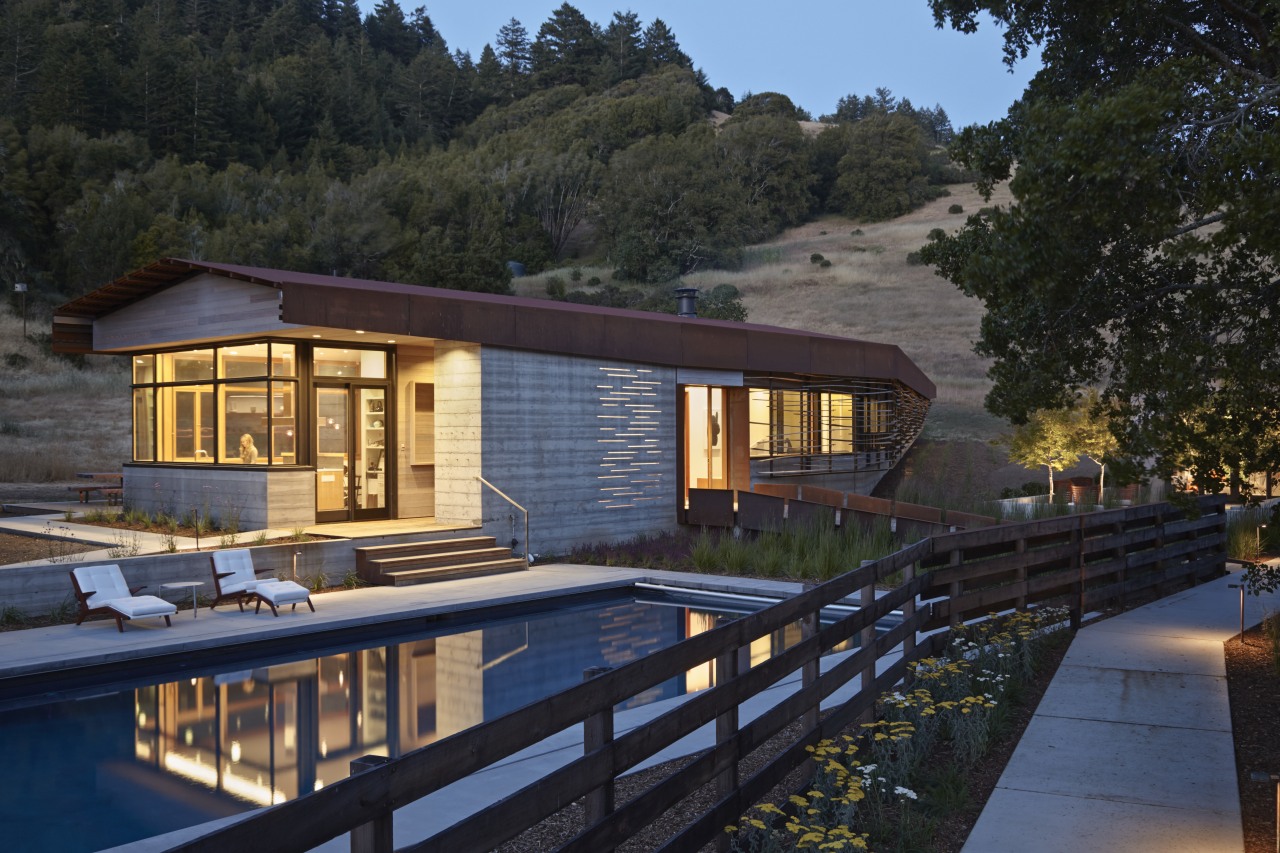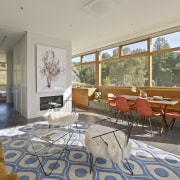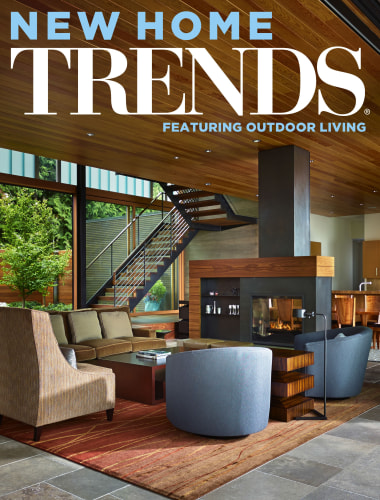Look twice
Contemporary rural home with solar screen by Schwartz and Architecture

A home in the country is increasingly seen as an antidote to city living, so it's not surprising to see contemporary rural architecture is also finding a different expression.
This house, on a 16ha ranchland site in California, challenges local building styles to provide a home that melds with the rugged landscape architect Neal Schwartz says it was conceived as a base camp for the owners and their children who love to explore the surrounding hills and tracks.
"The architecture is a direct response to the need to link with the outdoors," Schwartz says. "For example, the approach involves a series of thresholds, including bridges over a seasonal watercourse, that foster the idea of movement and exploration.
"The geometry of the house also helps. With its long, angled wing, the building appears to embrace the hills behind. And the forced perspective created by a tapering 30.5m-long solar screen on the exterior guides the view back into the landscape."
Positioning the house low on the site was another way to focus attention on the hills beyond.
"For many architects, the first impulse is to conquer a hill by placing the house at the very top. We wanted to flip that idea, so that the hill rises up behind the house, creating a much more powerful experience. It also made sense to build on the flat in terms of construction costs, and there is less noise from the local road.
"It was important to keep the house as abstract as possible we were not looking to reference residential architecture. And it was only later that we realised we were probably influenced by the traditional long, low-slung shed-like structures that hug the wide, horizontal landscape in this part of the county."

Raw materials were specified for the exterior, including Corten steel that weathers to a rusty patina, board-formed concrete, cedar and eucalyptus wood, which forms the solar screen.
"All materials have a natural tendency towards movement and change, and we often make futile attempts to stop this process," the architect says. "For this house, we embraced the inevitable weathering and warping of materials. The steel rusts, the cedar greys and fades, and the eucalyptus planks on the solar screen crook, cup, bow and twist, becoming slightly more deformed every day."
Schwartz says the screen is a gesture to the natural and man-made landscape. It recalls the movement of native grasses in the wind, and is reminiscent of timber stacks at the local mills of Marin County.
Much of the house is hidden from view, however it is only on the inside that the true size, and the view, become apparent. The front door is aligned so that when it opens, there is a sightline right through the house to the highest ridge on the hill behind one of several direct connections to key topographical features.
"The circulation corridor of the house runs along the southern edge, coinciding with an uninterrupted loop running through the home to the ridgeline above," says the architect. "A hinge' in the circulation spine breaks open the space for a moment, directing views to the north ridge and south courtyard. A secondary loop forms a figure eight connecting a series of boardwalks with a stand of oak trees to the east and a rock outcropping to the west."
Together, the house and a separate work studio cover approximately 370m². The main house is divided into two simple blocks, providing a day zone and a night zone, which are separated at the hinge by the south courtyard.
Natural and raw materials feature inside as well as out. Internal soffits, wall panelling and cabinetry are in Douglas fir, and the flooring is a polished coloured concrete slab. The grey and natural wood tones are repeated in furnishings, which reflect a Mid-century Modern influence.
The attention to detail extends to a custom-designed topographical pattern in mosaic tiles on the floor at the entry. And a fireplace screen mimics the warping pattern of the solar screen, with the fire animating the shadows at night.
Not surprisingly, given the strong links to the land, sustainable design initiatives feature throughout the property, which generates enough energy to be off the grid for most of the year.
There are solar thermal panels on the roof to provide radiant heat for the floor slab. Any excess heat is transferred to the hot water system, and any left-over heat is diverted to the swimming pool. The roof also accommodates photovoltaic panels that generate electricity. The system was computer modelled by an environmental consultant to ensure maximum efficiency and self sufficiency.
"Further energy savings are provided by the building skin," says Schwartz. "The Corten steel roof is lifted up on risers, like a second skin on top of the waterproofing membrane. Hot air forms in the gap between these layers, and is then sucked out, with the continual air movement helping to cool the house. The solar screen also helps to keep the interior cool."
The property has a well that provides all the water used by the household.
Credit list
Architect
Structural engineer
Landscape design
Daylighting/energy/sustainability
Cabinet company and architectural joinery
Roofing
Dining table
Benchtops
Ventilation
Bathtub
Taps
Interior decorator
Contractor
Lighting design
Mosaic designer
Cladding
Flooring
Drapes
Cabinetry
Refrigeration
Basins
Story by: Colleen Hawkes
Home kitchen bathroom commercial design
Home Trends Vol. 30/10
New Home Trends features top locations from New Zealand and the rest of the world. New Home Trends is dedicated to provi...
Read More













